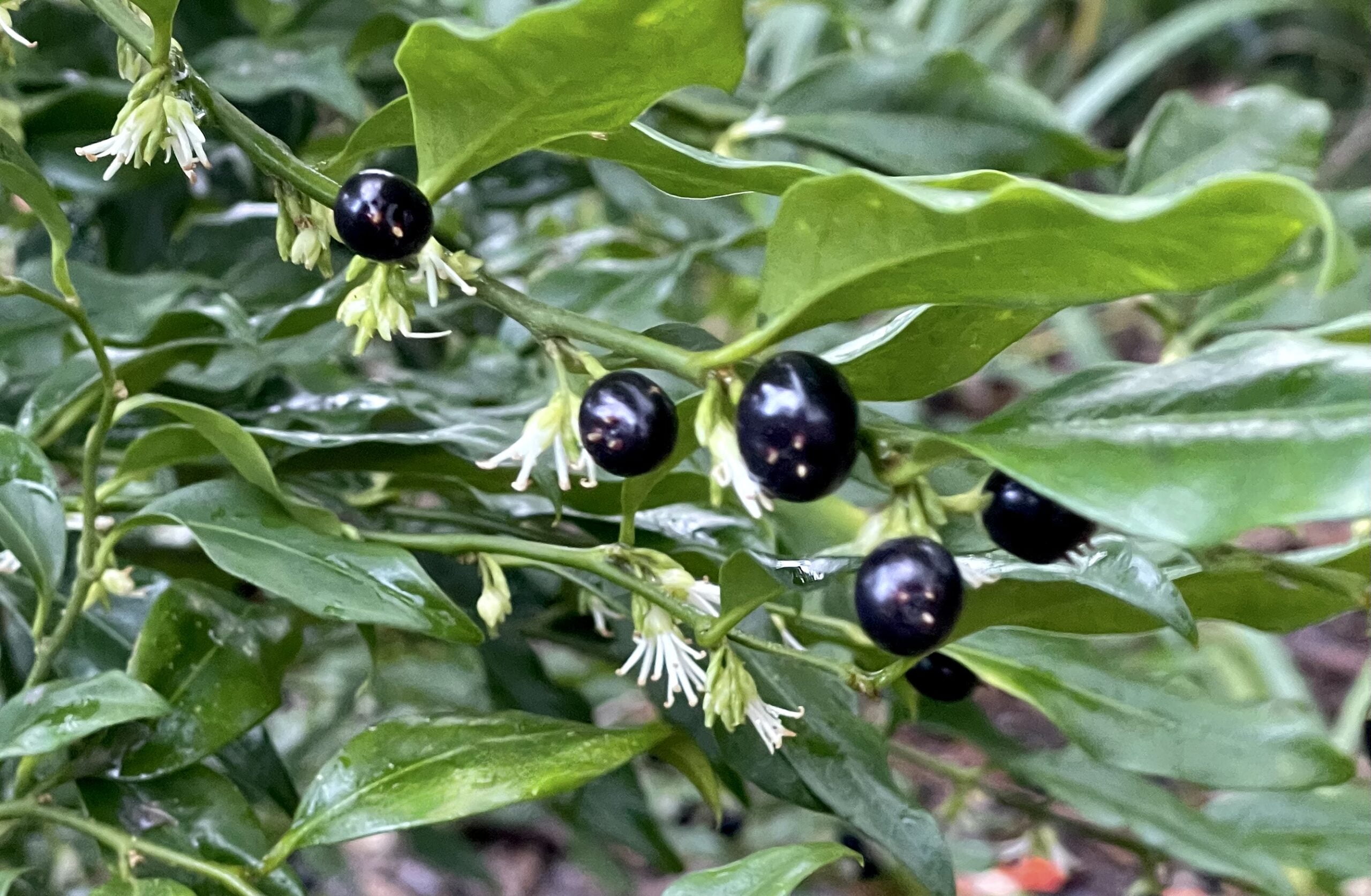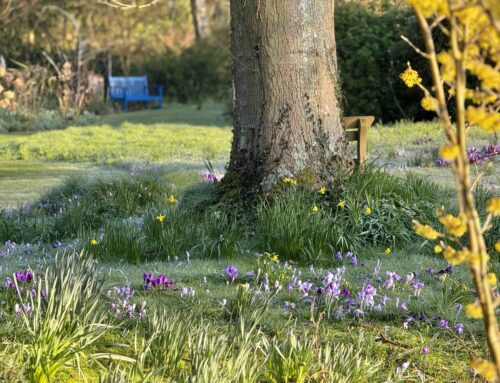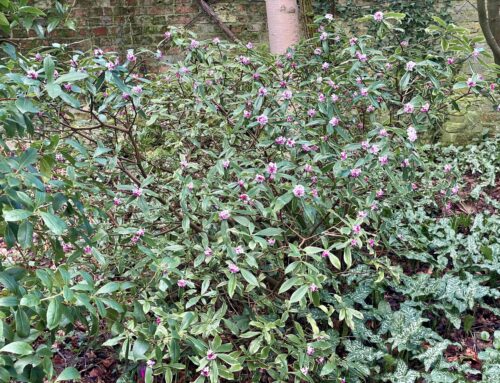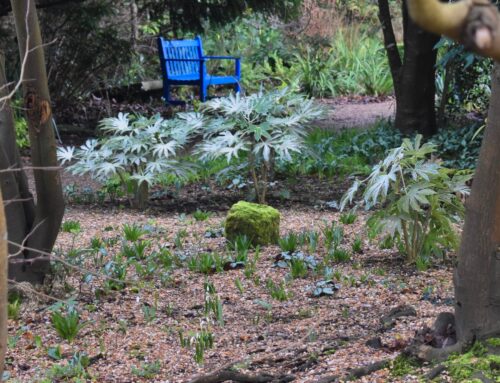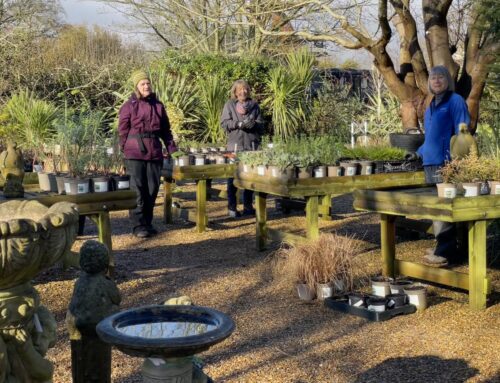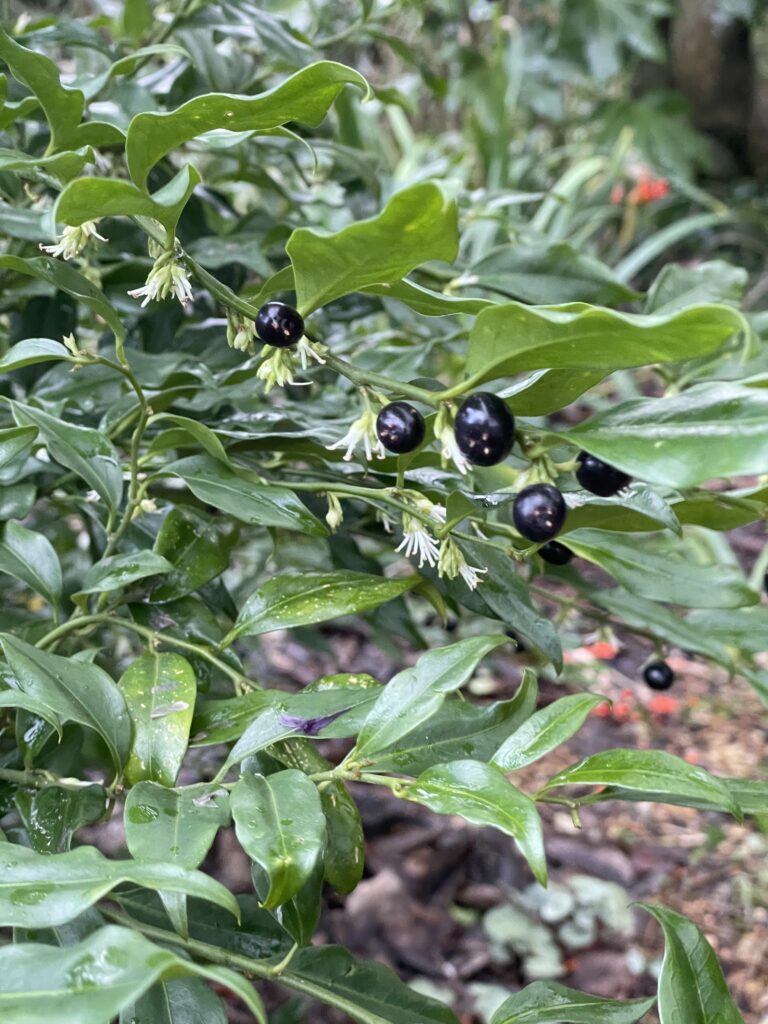 There are few garden experiences more profound than catching an unexpected whiff of floral fragrance on a winter’s day: Unexpected because winter is perceived to be an austere season to be endured, distinguished by cold grey days, miserable weather, and long, dark nights; and profound because fragrance, like sound, is a sort elusive fourth dimension to the garden that often is overlooked in the design process.
There are few garden experiences more profound than catching an unexpected whiff of floral fragrance on a winter’s day: Unexpected because winter is perceived to be an austere season to be endured, distinguished by cold grey days, miserable weather, and long, dark nights; and profound because fragrance, like sound, is a sort elusive fourth dimension to the garden that often is overlooked in the design process.
Here at Denmans Gardens there are a multitude of winter flowering plants that fill the air with scent, but sweet box, (sarcacocca), a member of the boxwood family, is perhaps the most versatile. With its fine, glossy dark green leaves, it is reliable and attractive grown as hedging, masses, and, in the case of the smaller species (Sarcococca hookeriana var. humilis), as a ground cover.
Belying its pervasive, exquisite scent, sweet box flowers are white and tiny (very pretty in flower arrangements). As such, when visitors walk by and catch the scent, they stop and search for the unobtrusive blossoms, sometimes unsuccessfully. The flowers are followed by dark, black berries, attractive but not showy, that are a good source of food for the birds. Indeed, the name sarcacocca means ‘flesh berry’, according to the Birmingham Botanical Garden.
A slow grower, sweet box prefers a spot with shade or partial shade and prefers well-draining soil. It doesn’t mind dry conditions once it is established.
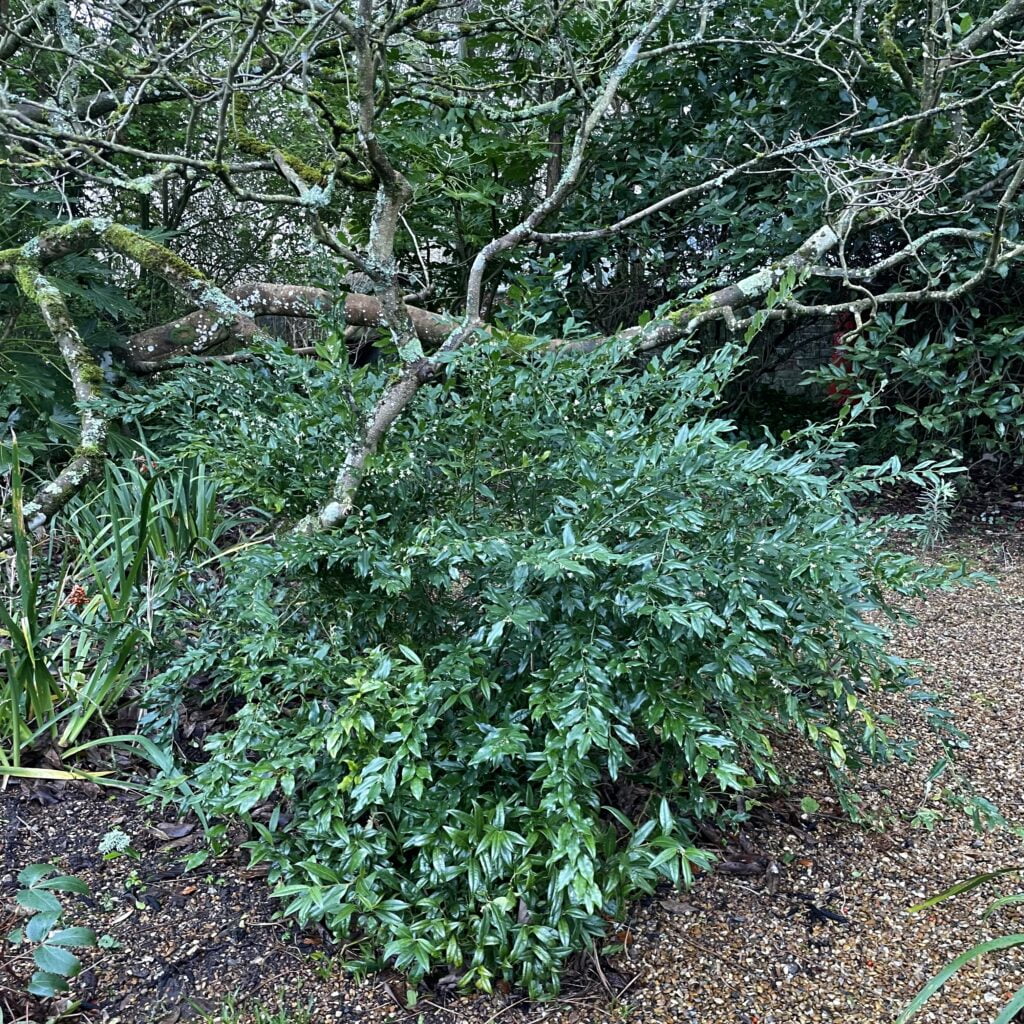 It is a fine-textured shrub, that can be permitted to grow naturally or can be pruned as a hedge in a more formal setting, and it tends to be pest and disease free, although it suffers in full sun. Pruning should be done in later winter so as not to cut off the following winter’s flowers.
It is a fine-textured shrub, that can be permitted to grow naturally or can be pruned as a hedge in a more formal setting, and it tends to be pest and disease free, although it suffers in full sun. Pruning should be done in later winter so as not to cut off the following winter’s flowers.
Native to eastern and southeastern Asia and the Himalayas, there are various species of sweet box – some tall and upright and others lower with arching stems. One species, Sarcacocca hookeriana var. digyna ‘Purple Stem’ has purple stems (well-named!) which can grow to a metre tall and 1.5 wide. We grow both Sarcococca hookeriana var. humilis, which blooms slightly earlier than nearby Sarcococca confusa. The combination means there is fragrance between the Cottage and Clock House for at least a month – providing another reason to love winter.

